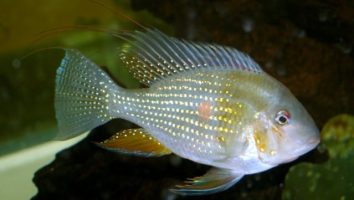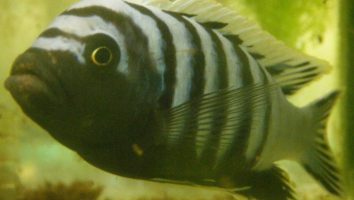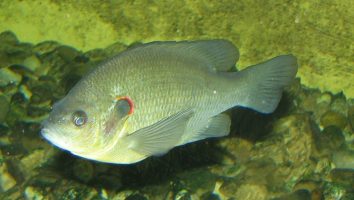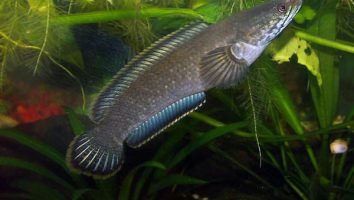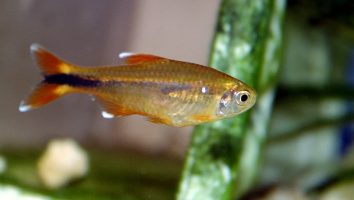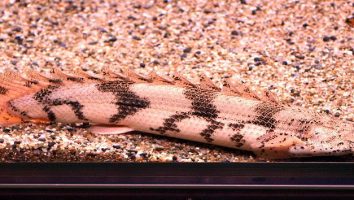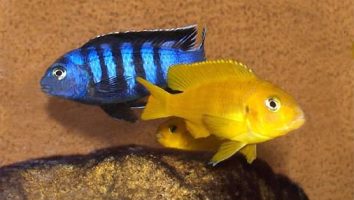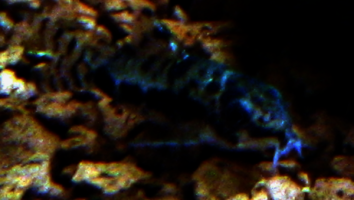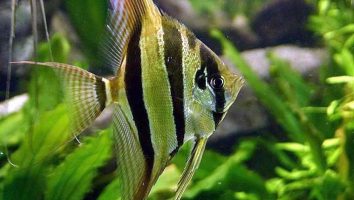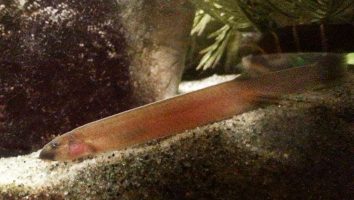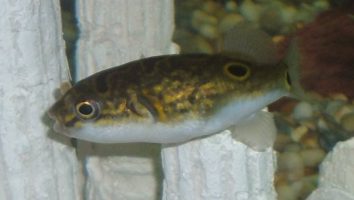The Forktail blue-eye is a beautiful and unique freshwater fish that is sure to stand out in any aquarium.
This species is relatively new to the hobby, so there is still a lot we don’t know about them.
But that doesn’t mean they’re not a great fish to keep! With the proper care, they can be a real joy to watch and care for.
In this guide, we’ll teach you everything you need to know about Forktail blue-eye care. Tank size, diet, lifespan, and more.
Table of contents
Species overview
Forktail blue-eyes (Pseudomugil furcatus) are found all throughout Australia in various freshwater habitats.
They prefer slow-moving water with plenty of vegetation to hide in. This could be in the form of plants, logs, or rocks.
Forktail blue-eyes are very peaceful fish and get along well with most other similar-sized fish. They are not known to be aggressive at all.
The main attraction of the forktail blue-eye is its bright blue eyes and colorful body. These fish are very popular in the freshwater aquarium scene and make a great addition to any community tank.
Appearance
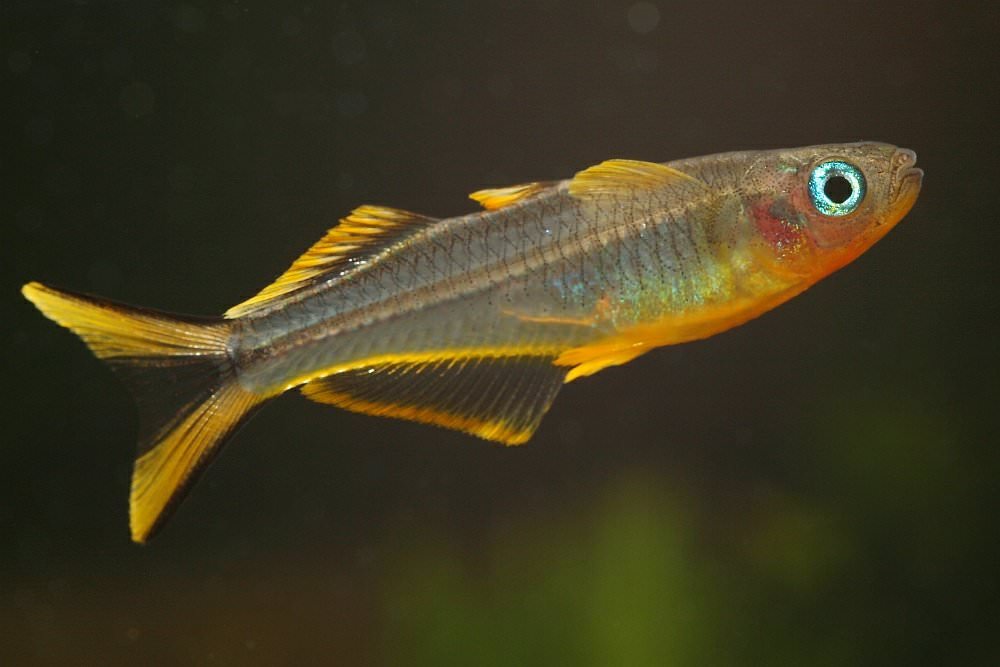
The Forktail blue-eye is a very small freshwater fish that is easily recognizable thanks to its forked tail. This fish is also known as the Blue-eye rainbowfish and it is a member of the Melanotaeniidae family.
The body of the Forktail blue-eye is long and slender with a slightly flattened shape. The head is small and blunt with a large eye that has a dark blue iris. The mouth is small and slightly upturned.
The Forktail blue-eye gets its name from its forked tail which is longer than the rest of its body. The tail and the fins are all transparent with a hint of blue. The dorsal fin is short and rounded while the anal fin is long and pointed.
The body of the Forktail blue-eye is pale blue with a hint of silver. There is a dark blue stripe that runs along the length of the body from the snout to the tail.
Lifespan
The average lifespan for a Forktail blue-eye is between 2-4 years. However, with proper care, they can live up to 6 years.
Size
Forktail blue-eyes are very small fish, only growing to be about 1.5 inches in length when fully mature. This makes them one of the smallest freshwater aquarium fish available.
Tank
Tank Size
The recommended tank size for forktail blue-eye rainbows is 20 gallons. These fish are not too large and don’t need a ton of space to swim.
If you’re looking to keep a school of these fish, you should add an additional 2 to 4 gallons of water per fish.
Water Parameters
The forktail blue-eye (Pseudomugil furcatus) is a peaceful and relatively easy to care for freshwater fish. They’re a perfect choice for beginners and make a great addition to a community tank.
Forktail blue-eye are found in slow moving freshwater streams and rivers in Australia and New Guinea. These fish do best in a tank that simulates their natural habitat.
Here are a few basic water parameters to help create a healthy environment for your forktail blue-eye.
- Water temperature: 72 to 82 degrees Fahrenheit
- pH levels: 6.5 to 7.5
- Water hardness: 5 to 15 dGH
- Alkalinity Levels: 4-8 dKH
What To Put In Their Tank
The interior of the aquarium is just as important as the fish themselves when it comes to setting up a proper environment.
The substrate is one of the most important things to consider. We recommend a soft, sandy substrate for these fish. They’re known to be pretty active diggers, and a harder substrate can damage their delicate fins.
As for decorations, it’s important to avoid anything too sharp. These fish are known to thrash around a bit when they’re spooked, and you don’t want them to hurt themselves.
Caves, driftwood, and plants are all great choices. Just make sure that the plants are well-rooted so they don’t get uprooted by an active fish.
Water quality is also important for these fish. They come from streams with high oxygen levels, so you’ll need to make sure the water in their tank is well-aerated.
Common Diseases
Forktail blue-eye are a pretty hardy fish, so they don’t often get sick. However, there are a few diseases that they are susceptible to.
The most common one is ich. This is a pretty common disease in freshwater fish, and the forktail blue-eye is no exception.
The most obvious symptom of ich is the presence of white spots on the body of your fish. If you notice this, it’s important to take action immediately.
Ich is pretty easy to treat, but it can be deadly if left untreated. So, if you see any signs of ich, be sure to consult your vet and begin treatment right away.
Another disease that these fish can get is hole-in-the-head disease. This is a fairly rare disease, but it can be pretty serious if your fish contracts it.
This disease is caused by poor water quality, and it presents itself as one or two pits/holes in the skin of your fish’s head.
If you notice this, it’s important to take action immediately. Fixing your water quality is the first step, but you may also need to consult your vet for further treatment.
Hole-in-the-head disease can be pretty serious, so it’s important to take any signs of it seriously.
As we mentioned before, the best way to keep your forktail blue-eye healthy is to maintain a clean and stable tank. These fish are pretty hardy, but they’re not immune to poor water conditions.
So, be sure to do regular water changes and monitor the quality of your water closely. This will go a long way in keeping your fish healthy and disease-free.
Behavior & Temperament
The forktail blue-eye is a peaceful and relatively shy fish. It’s not uncommon for these fish to spend most of their time hiding behind plants or other objects in the tank.
They are nocturnal fish, so you’re more likely to see them active at night. During the day, they’ll often stay in their hiding spots and only come out to eat.
Forktail blue-eye fish are social creatures and do best when they’re kept in groups. They’re not particularly territorial, but they do need their space. Keeping them in a tank that’s too small will result in stress, which can lead to health problems.
When they’re in a group, you’ll often see them swimming close together. They’re not a particularly active fish, but they will move around the tank to explore their surroundings.
Tank Mates
When it comes to Forktail blue-eye tank mates, there are a few things to consider.
First, these fish come from slow-moving streams in Australia. As a result, they’re used to having plenty of places to hide.
This is important because Forktail blue-eyes are timid. They’re not aggressive, but they can get spooked easily. If they don’t have plenty of hiding spots, they’ll be stressed out.
Secondly, these fish like to school. They’re not necessarily social creatures, but they do feel more comfortable when they’re around their own kind.
Ideally, you should keep at least six Forktail blue-eyes together. This will allow them to school and feel more secure in their environment.
Finally, Forktail blue-eyes are sensitive to water conditions. They prefer soft, acidic water. As a result, you’ll need to be careful when choosing tank mates.
You’ll want to avoid fish that are too big or too aggressive. You’ll also want to avoid fish that come from waters with different water conditions.
Some good Forktail blue-eye tank mates include:
- Neon Tetra
- Ember Tetra
- Cardinal Tetra
- Rummy-nose Tetra
- Ghost shrimp
Breeding
The Forktail blue-eye is a peaceful community fish that is relatively easy to breed in captivity. They are an egg-laying species that does not exhibit parental care, so the fry will need to be removed from the tank as soon as they hatch.
To encourage spawning, it is best to keep a ratio of two females to one male. The male will chase the females around until one of them is ready to lay her eggs.
Eggs are usually laid on plants or other objects in the tank. Once the eggs are laid, the male will fertilize them and then leave the area. It is important to remove the male at this point, as he will eat the eggs if given the chance.
The eggs will hatch in about 24 hours. The fry will be very tiny and will need to be fed micro-sized food. Baby brine shrimp or infusoria are good choices.
As the fry grow, you can begin to introduce them to larger foods. Once they are big enough, you can move them to a different tank or add them back into the community tank.
Conclusion
The Forktail Blue-eye is a great fish for beginner aquarists. They’re relatively easy to care for and are very peaceful fish.
They’re a great addition to any community tank and will do well with a variety of different fish.
If you’re looking for a low-maintenance fish that is still interesting and beautiful, the Forktail Blue-eye is a great choice!

